|
|
|
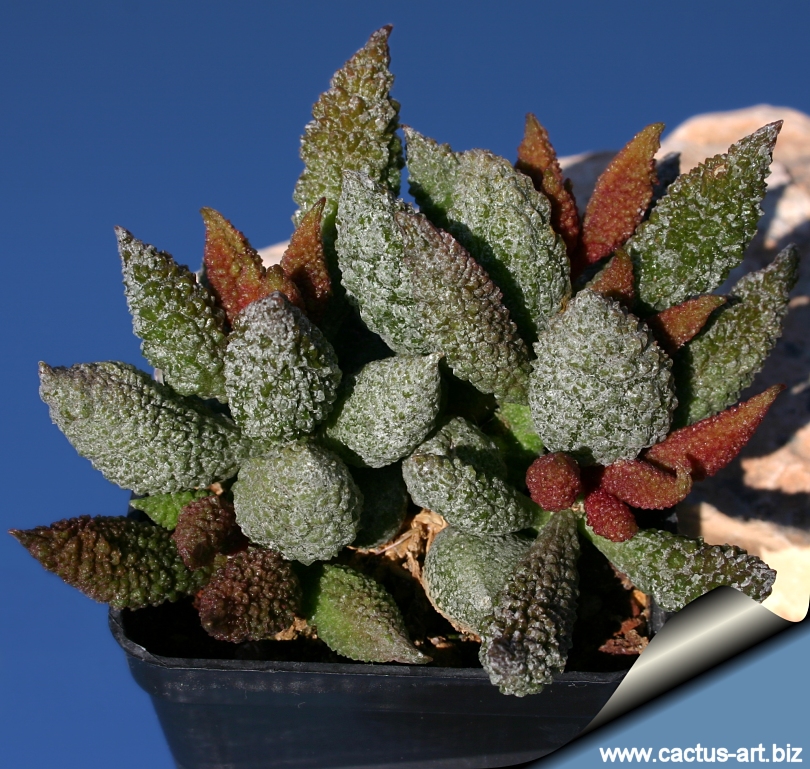
Adromischus herrei
This plant is extraordinary in appearance and among the most
notable species of the genus and well worth cultivating. It forms a
cluster of distinctive leaves that are rough and warty on the surface.
|
|
Description: Small
slow-growing succulent shrub constricted at the base, variable in size
up to up to10 cm tall with many thin and very short branches. It
is now believed to be merely a red-brown population of A.
marianiae with very rough leaves that looks like dried raisins.
This species is variable and every clone is distinct and worth to grow
more than one sample.
Stem: Short, erect, tapering, basally tuberose.
Roots: Tuberose.
Leaves: Green to reddish-brown or purple (depending on clones,
growing conditions and seasons), unspotted, becoming grey and waxy as
they ages, petiolate, short, almost spherical to elongate lanceolate or
oblanceolate, tapered at both ends and roundish in cross section or
slightly concave above, 1,5 to 3,5 cm long, very irregularly warty (tubercled)
and slightly caniculate (grooved) in the upper part. Margins absent or
brownish or white, raised and more or less horny especially near the
tip.
Flowers: Green with pinkish-red tinge about 12 mm long.
|
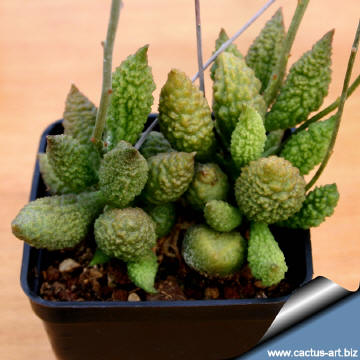 |
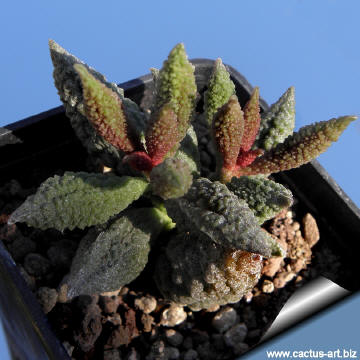 |
|
. |
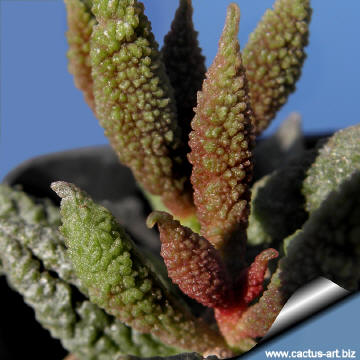 |
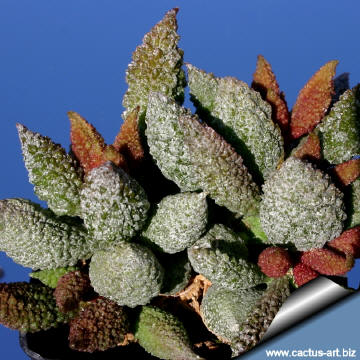 |
|
. |
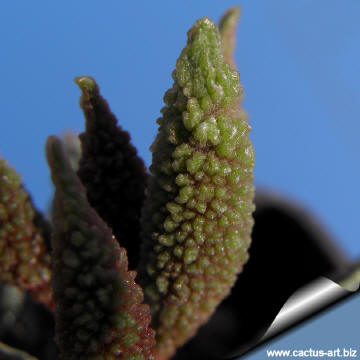 |
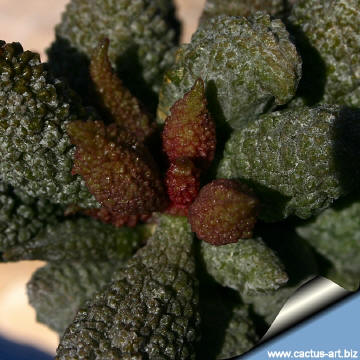 |
|
. |
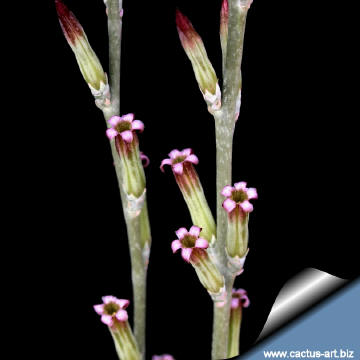 |
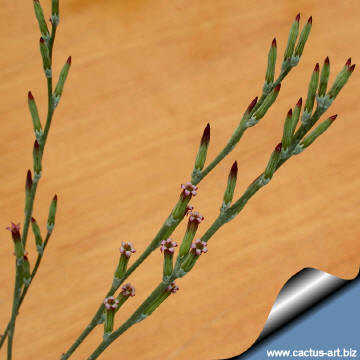 |
|
Advertising
|
|
|
|
|
Family: Crassulaceae (Stonecrop
Family) Adromischus herrei (W. F. Barker)
von Poellnitz
In: in Fedde 44: 62. 1938.
Accepted
scientific name: Adromischus marianae fa. herrei
(W.F.Barker) J.Pilbeam
In: Nation. Cact. Succ. J. (U. K.), 36 (2): 34: 1981
Origin: South Africa (Little Namaqualand)
Habitat: Often filling up cracks on granite hills.
Synonyms:
- Cotyledon herrei W. F. Barker
1931
- Adromischus marianae var. antidorcadum
von Poellnitz
In:Fedde, Repert. 44. 61, sphalm. anticordatum; et in Cact. Journ.
Brit. 7. 19 (1938)
- Adromischus var. immaculatum
Uitewaal 1953
Since this species has highly variable in leaf
texture colour, it is worth collecting many forms.
|
|
|
|
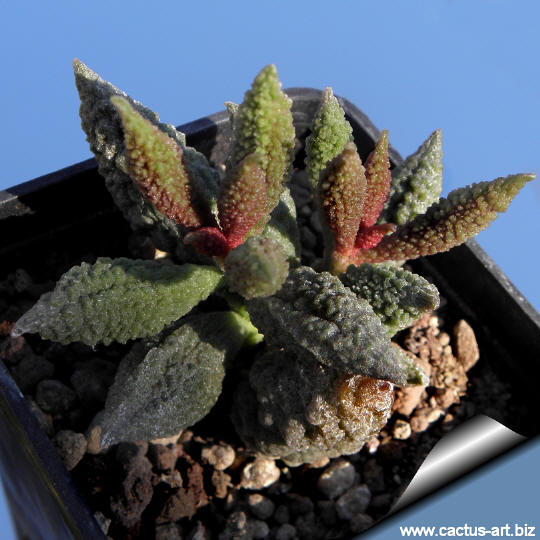
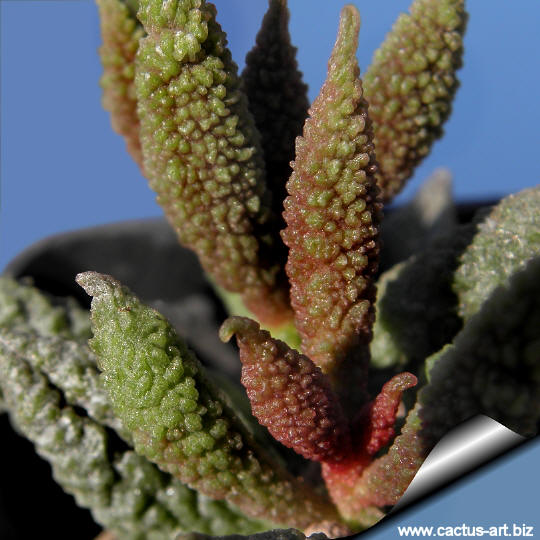
Cultivation:
They prefer well-drained soil in a partially shaded position and require
a minimum temperature 5°C (But hardy down to -7°C for short periods),
with good drainage and dryness in winter to resist the cold. Let the
soil dry between soaking, in the wild, it receives rain mostly in spring
and fall. Must have very dry atmosphere.
They are vulnerable to
mealybugs
and rarely
scale. It
is prone to rotting from the tuberous base or from dried inflorescences.
As the plant matures, the centre becomes bare. When it does, restart it
from side cuttings and throw away the central part.
Propagation:
Adromischus seeds are very small and seed
propagation is rarely used they are
usually propagate from
single leaves (leaf
cuttings)
or stem cuttings.
Twist off a leaf and permit it to dry out a
couple of days, lay it on the soil and insert the stem end partially
into the soil. The original leaf should not be removed until it has
dried up. Try to keep the leaf somewhat upright so that the roots are
able to grow downward. If grown in a container, bottom watering by
immersing the container is recommended.

 |
|